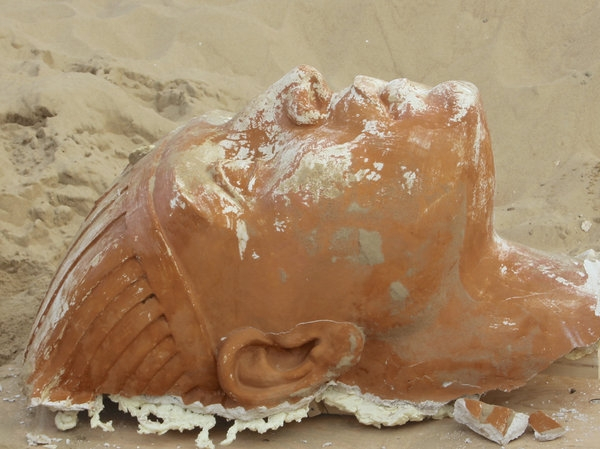Archaeologists recently unearthed a curious artifact in California: An Egyptian sphinx.
Unlike the Great Sphinx of Giza, which was made of bedrock, this sphinx was made from plaster. And it wasn't carved by the ancient Egyptians, but molded by designers on the set of Cecil B. DeMille's 1923 biblical film The Ten Commandments.
The film featured thousands of actors and actresses, and the director commissioned famed art deco designer Paul Iribe to construct an ancient Egyptian palace for the film's backdrop. Iribe's final product was the largest set design of its time and included more than 20 sphinxes.
After filming was complete, the 12-story set was too expensive to dismantle —and too valuable to leave for rival film studios to pilfer. In a move just as ambitious as his filmmaking, DeMille, who created a second version of the film in 1956, ordered the set buried at a location unknown to the public.
....
